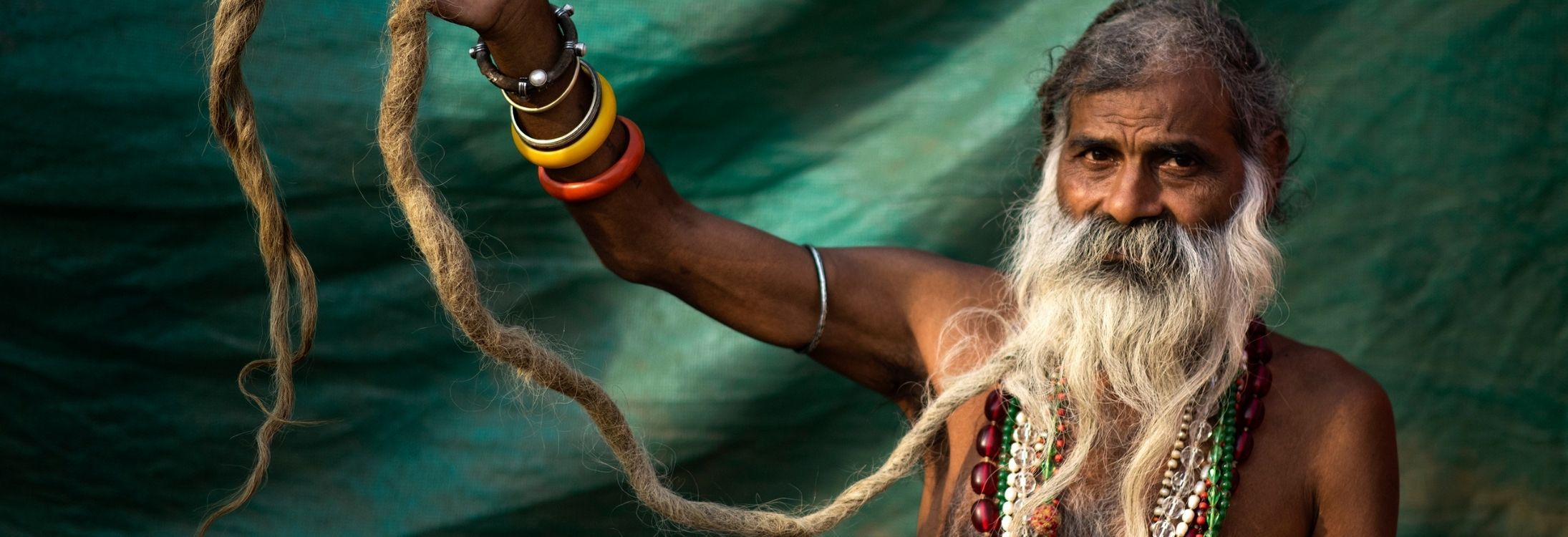"The festivals are like a map charting our spiritual progress in God."
Myth has it, that the 'Devas' & 'Asuras' were churning the ocean of milk for 'Amrit.' A heavenly fight ensued for its possession. Out of the 'Kumbh or pot, 4 drops landed at four locations - Allahabad’s Triveni, Haridwar’s Ganga, Ujjain’s Shipra, and Nasik’s Godavari. To attend a Kumbh Mela, therefore, is to celebrate good's triumph over evil; to bathe in the waters is to renew and cleanse oneself of the sins and be blessed. Astrologically determined, the twelve-year cycle, alternates in such a way that about every three years a 'Kumbh Mela' takes place. If you don’t want to miss it, make sure you book your flight tickets in advance.
A wobbly 4-hour ride to Nasik through lush, verdant meadowy ghats brings us to the bustling city. The heart navigates us to the temple town of 'Trimbakeshwar', about 35 kilometers from Nasik. An old wives’ tale lets us know that a bloody conflict led to the segregation of the Mela. Nashik holds campsites for 'Vaishnavites' (Vishnu Bhakts) and Trimbakeshwar, the Shaivites (Shiva Bhakts). At a distance, atop Neel Parbat, a trident stood tall, grand, and imposing. Naga Sadhus, the warriors of Juna Akharas from all across India attend Kumbh Mela.

We made a steep ascend of 200 steps towards the summit. Apart from the temple of Nilamba Matamba, there is an old akhada of the Gosavi sect, and an ancient temple of Sadguru Dattatraya, the presiding deity of 'Juna akhada'. Small tents dotted the path, in which sat the naga sadhus in front of their dhunis (fire-pit). Huddled group of sadhus and Kumbh travelers smoking chillums, drinking chai performing yoga postures, and demonstrating 'siddhis' of their tapsya, made for a picturesque scenario.
The public announcement system made round-the-clock announcements for missing people. People held onto each other's hands, as humanity swarmed by the narrow lanes. An estimated 10 lakh people are expected to partake in the Shahi Snan, the Royal Bath.
As morning dawned, we began our journey. Barefoot, we continued to join in other regiments, partaking in their energy. It's a caravan - devas, indras, asuras, rakshakhs - the pantheon of Hindu gods & demi-gods, all marching towards the drop of Amrit.
After what seemed like an eternity, the path cleared and we were inside the sacred pond. Not a moment to spare as crowds start increasing in number, we took the dip, filled our jars with the holy water, and walked out. For the rest of the day and night, humanity continued towards this quest. We were tired, though too ecstatic to rest, but one must still their body and the mind.

A smaller, though no less significant quest, was to get the darshan of the beautiful Trimbakeshwar temple. Waiting in the queue for 6-7 hours is not something we desired. Luck was on our side. On the same day, we witnessed a beautiful aarti in the evening at Kushavarta. Meanwhile, some naga sadhus atop a hill began to disperse. For now, this celebration drew to a closure. The life of a naga sadhu is a pilgrimage, forming a part of their tirth or voyage.
My tirth drew to a closure, a solo bus ride got me back to Bombay, where I spent time by the ocean assimilating the Kumbh experience, a 4-day journey through this incredible labyrinth. Archetypes imprinted in the collective consciousness drawing people from all walks of life. The collective energy of humanity focussed on a single quest is powerful. Modernity juxtaposed alongside history. The delicate balance between tradition, religious celebration, commerce, and technology.
Book Holiday Packages
Dubai Tour Packages | Singapore Tour Packages | Thailand Tour Packages
